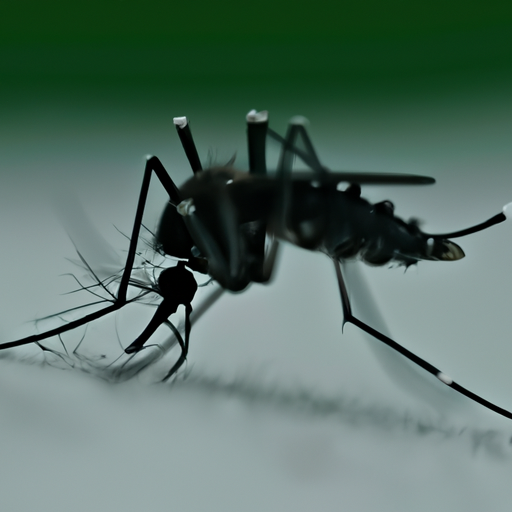The Causes of the Recent Increase in Uncommon Malaria Cases in the US
Malaria is a serious and potentially life-threatening disease caused by parasites that are transmitted to humans through the bite of an infected mosquito. In recent years, there has been an increase in the number of uncommon malaria cases in the United States. This is a cause for concern, as it can lead to serious health complications and even death.
The primary cause of the recent increase in uncommon malaria cases in the US is the rise in international travel. As more people travel to countries where malaria is endemic, they are exposed to the disease and can bring it back to the US. Additionally, the spread of drug-resistant strains of malaria has made it more difficult to treat the disease, leading to an increase in cases.
Climate change is also a contributing factor to the rise in uncommon malaria cases in the US. Warmer temperatures and increased rainfall create ideal conditions for mosquitoes to breed, leading to an increase in the number of mosquitoes carrying the malaria parasite.
Finally, the lack of access to preventive measures such as insect repellent, mosquito nets, and antimalarial drugs can also contribute to the spread of malaria. In some areas, people may not have access to these preventive measures, making them more vulnerable to the disease.
It is important to take steps to prevent the spread of malaria in the US. People should take precautions when traveling to areas where malaria is endemic, such as using insect repellent and sleeping under a mosquito net. Additionally, people should be aware of the symptoms of malaria and seek medical attention if they experience any of them. Finally, it is important to support efforts to provide access to preventive measures and antimalarial drugs in areas where they are needed.
How to Prevent the Spread of Uncommon Malaria in the US
Malaria is an infectious disease caused by a parasite that is spread through the bite of an infected mosquito. Although uncommon in the United States, malaria is still a risk for travelers and those living in certain areas. To help prevent the spread of malaria in the US, here are some tips:
1. Avoid Mosquito Bites: The best way to prevent malaria is to avoid mosquito bites. Wear long-sleeved shirts and long pants when outdoors, especially at dawn and dusk when mosquitoes are most active. Use insect repellent containing DEET or picaridin on exposed skin and clothing. Make sure to follow the directions on the label.
2. Get Vaccinated: If you are traveling to an area where malaria is common, talk to your doctor about getting vaccinated. There are several vaccines available that can help protect you from malaria.
3. Use Insecticide-Treated Bed Nets: If you are traveling to an area where malaria is common, use insecticide-treated bed nets when sleeping outdoors or in an unscreened room. The nets should be tucked in around the bed and sprayed with insecticide every six months.
4. Take Medication: If you are traveling to an area where malaria is common, talk to your doctor about taking antimalarial medication. This medication can help prevent malaria if taken as directed.
5. Stay Informed: Stay informed about the risk of malaria in the areas you are visiting. Check the Centers for Disease Control and Prevention (CDC) website for the latest information on malaria risk in different countries.
By following these tips, you can help prevent the spread of malaria in the US. Remember to always take precautions when traveling to areas where malaria is common and talk to your doctor about any questions or concerns you may have.
The Impact of Climate Change on the Emergence of Uncommon Malaria Cases in the US

Climate change is having a significant impact on the emergence of uncommon malaria cases in the United States. Malaria is a mosquito-borne infectious disease caused by a parasite. It is most commonly found in tropical and subtropical regions, but it can also be found in some parts of the United States.
In recent years, the number of malaria cases in the United States has been increasing due to climate change. Warmer temperatures and increased rainfall create ideal conditions for mosquitoes to thrive, which increases the risk of malaria transmission. Additionally, climate change has caused shifts in the geographic range of mosquitoes, allowing them to spread to new areas. This has resulted in the emergence of uncommon malaria cases in the United States.
The most common type of malaria in the United States is Plasmodium vivax, which is typically found in tropical and subtropical regions. However, climate change has caused the emergence of other types of malaria, such as Plasmodium falciparum and Plasmodium ovale, which are more common in Africa and Asia. These types of malaria can cause more severe symptoms and can be more difficult to treat.
In addition to the emergence of uncommon malaria cases, climate change is also having an impact on the spread of existing malaria cases. Warmer temperatures and increased rainfall can cause existing cases to spread more quickly and to new areas. This can lead to an increase in the number of cases and an increased risk of transmission.
The impact of climate change on the emergence of uncommon malaria cases in the United States is concerning. It is important to take steps to reduce the risk of transmission, such as using insect repellent, wearing long-sleeved clothing, and avoiding areas with standing water. Additionally, it is important to be aware of the symptoms of malaria and to seek medical attention if they occur. By taking these steps, we can help reduce the risk of malaria transmission and protect ourselves and our communities.
The Role of Mosquito Control in Reducing the Risk of Uncommon Malaria in the US
Mosquito control is an important tool in reducing the risk of uncommon malaria in the United States. Malaria is a serious and potentially life-threatening disease caused by a parasite that is spread through the bite of an infected mosquito. While malaria is not common in the United States, it is still a risk for those who travel to areas where the disease is more prevalent.
Mosquito control is a key part of reducing the risk of malaria in the United States. Mosquito control involves a variety of strategies, including eliminating standing water where mosquitoes can breed, using insecticides to kill adult mosquitoes, and using larvicides to kill mosquito larvae. These strategies can help reduce the number of mosquitoes in an area, which in turn reduces the risk of malaria transmission.
In addition to mosquito control, there are other steps that can be taken to reduce the risk of malaria in the United States. These include using insect repellent, wearing long-sleeved shirts and pants, and avoiding outdoor activities during peak mosquito hours (dusk and dawn). It is also important to take preventive medications if you are traveling to an area where malaria is more common.
Overall, mosquito control is an important tool in reducing the risk of uncommon malaria in the United States. By taking steps to reduce the number of mosquitoes in an area, as well as taking preventive measures when traveling to areas where malaria is more common, you can help reduce your risk of contracting this serious and potentially life-threatening disease.
The Role of Public Health Education in Reducing the Risk of Uncommon Malaria in the US
Malaria is a serious and potentially life-threatening disease that is caused by a parasite that is transmitted through the bite of an infected mosquito. Although uncommon in the United States, malaria is still a risk for travelers and those living in certain areas of the country. Public health education is an important tool in reducing the risk of malaria in the US.
Public health education can help to raise awareness of the risk of malaria in the US and provide information on how to reduce the risk of infection. Education can help to inform people about the signs and symptoms of malaria, as well as how to prevent it. This includes information on avoiding mosquito bites, using insect repellent, and wearing protective clothing when outdoors. Education can also provide information on the importance of seeking medical attention if symptoms of malaria are present.
Public health education can also help to inform people about the risk of malaria in certain areas of the US. For example, certain areas of the US, such as the Gulf Coast and parts of the Southwest, are at higher risk for malaria due to the presence of certain species of mosquitoes that can transmit the disease. Public health education can help to inform people living in or traveling to these areas of the risk of malaria and how to reduce their risk of infection.
Finally, public health education can help to inform people about the importance of seeking medical attention if they experience any symptoms of malaria. Early diagnosis and treatment of malaria is essential for reducing the risk of serious complications and death. Public health education can help to raise awareness of the importance of seeking medical attention if symptoms of malaria are present.
Public health education is an important tool in reducing the risk of malaria in the US. Education can help to raise awareness of the risk of malaria, provide information on how to reduce the risk of infection, and inform people about the importance of seeking medical attention if symptoms of malaria are present. By increasing public awareness and understanding of malaria, public health education can help to reduce the risk of malaria in the US.
